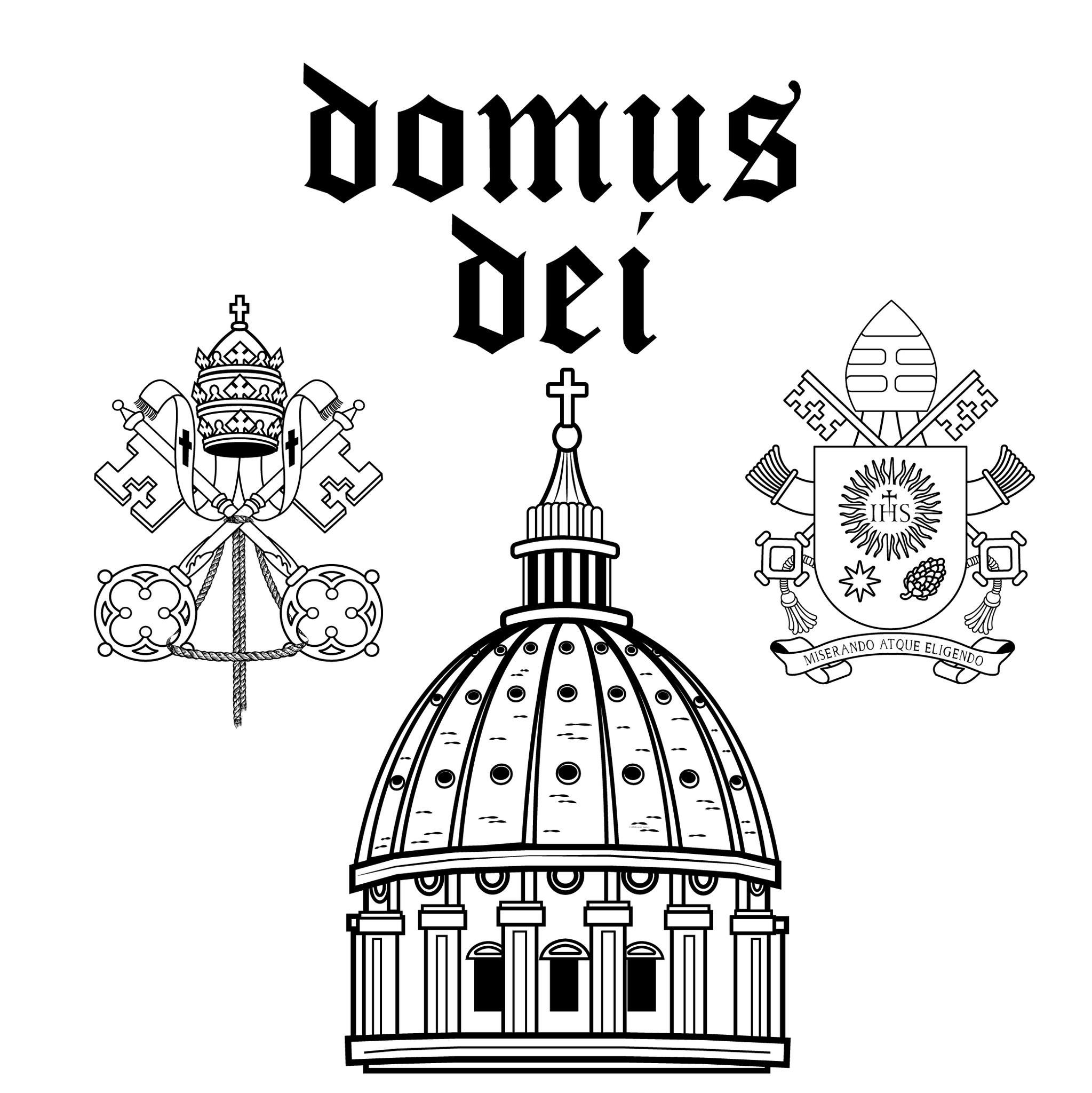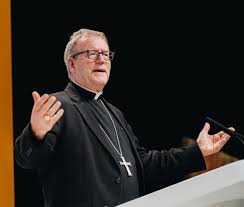Bishop Robert Barron’s recent article, “Francis in Full“, offers an affectionate but deeply misleading portrait of Pope Francis’ papacy. While filial piety toward the Roman Pontiff is commendable, charity demands the full truth, not selective memory. A true accounting of Pope Francis’ legacy must grapple with the deep contradictions, harshness, and selective mercy that characterized his reign. Unfortunately, Bishop Barron’s reflection falls far short of this obligation.
Selective Memory: The Omission of Traditionis Custodes
Most strikingly, Bishop Barron praises Francis’ many writings—Evangelii Gaudium, Laudato Si’, Fratelli Tutti, and more—yet conveniently fails to even mention Traditionis Custodes (2021). This omission fatally undermines Barron’s credibility. Traditionis Custodes was not a footnote of Francis’ papacy; it was a watershed moment.
By it, Pope Francis reversed the work of Benedict XVI’s Summorum Pontificum and severely curtailed the Traditional Latin Mass (TLM), which Benedict had called “a treasure for the Church.”
In Traditionis Custodes, Francis wrote:
“The liturgical books promulgated by Saint Paul VI and Saint John Paul II, in conformity with the decrees of Vatican Council II, are the unique expression of the lex orandi of the Roman Rite.”
This declaration—sweeping, absolutist, and hostile to a living tradition that nourished saints for centuries—treated faithful Catholics who loved the ancient rites as a problem to be managed, not as sheep to be cared for.
In his accompanying letter to bishops, Francis further accused devotees of the TLM of using the liturgy to sow division and “reject the Church and her institutions,” without any pastoral outreach, without any due consideration for the real fruits seen among these communities: vibrant vocations, large families, and deep devotion.
Bishop Barron’s failure to even acknowledge this act of severe pastoral aggression is not merely an oversight. It is a distortion.
The Reality: A Papacy of Harsh Judgment and Division
Bishop Barron claims Pope Francis embodied a spirit of mercy and tolerance. Yet Francis’ own words reveal something very different: a pontificate often marked by harshness, mockery, and merciless judgment—particularly toward the faithful most committed to tradition.
Again and again, Francis publicly and aggressively impugned the motives of Catholics who love the Church’s traditions:
- In a 2016 homily, he said:
“Rigidity is not a gift of God. Behind every rigid person there is a problem, there is something hidden in life.”
- In a 2019 address to the Italian bishops, he warned against admitting seminarians “too attached to the liturgy,” stating:
“This rigidity is not of the good Spirit, because it hides something.”
- In 2021, speaking to Carlos Herrera on COPE radio, Francis mused:
“I always try to understand what’s behind those who are too young to have lived the pre-conciliar liturgy but still want it. Sometimes I find myself faced with strange phenomena: young people who want to wear lace and carry candles, all that.”
Far from a pope indifferent to appearances, Francis often judged souls by their external devotions, assuming duplicity, insecurity, or “something hidden” behind them. This is a serious violation of charity. Christ commanded us to “judge not according to appearance, but judge righteous judgment” (John 7:24). Yet Pope Francis repeatedly judged the interior lives of his faithful by the simple fact that they loved sacred tradition.
The “Grandmother’s Lace” Mockery
The culmination of this contempt came in a meeting with the Congregation for Divine Worship in 2019, where Francis saying that he has “seen pictures,” wherein he regretted the fact that priests still wear vestments with lace. He began with, “Where are we?! Sixty years after the council!” and continued:
“I sometimes think of the way in which some people return to the past, to seek forms of solemnity that at times were pompous, where there was no beauty, no true liturgical beauty. It was a form of artificiality, a life that was somewhat ‘grandmother’s lace’, it was not even that of my grandmother…”
“It was a fashion at the time. Some of it was even ‘sacred fashion,’ but it was not liturgical life.”
(— Pope Francis, Address to the Congregation for Divine Worship and the Discipline of the Sacraments, 14 February 2019)
This insult against traditional liturgical vestments and rites belies Bishop Barron’s suggestion that Francis “did not care what people wore.” In truth, Francis cared very much—so much that he publicly ridiculed the external expressions of reverence that nourished the Church for generations. Sacred vesture, lace included, is not mere “fashion” or nostalgia. It is an offering of human beauty to the service of divine worship, the clothing of the altar of God in the best the human spirit can offer.
If sacred garments are to be scorned as “grandmother’s lace,” shall we also mock the chasuble, the cope, the dalmatic, and the very altar itself since they are also born of tradition and antiquity? Francis’ repeated attacks show not open-mindedness, but a profound hostility toward the organic living memory of the Church.
Selective Mercy: Punishment for the Faithful, Indulgence for the Dissenters
Even worse, Francis’ harshness toward traditional Catholics stands in stark contrast to his indulgence toward those who openly undermined Catholic doctrine:
- Bishop Gustavo Zanchetta, accused of sexual misconduct, was initially protected and given a Vatican position.
- Father James Martin, SJ, known for promoting messages contrary to Catholic moral teaching, was warmly welcomed and publicly praised.
- German bishops promoting radical changes to Church teaching on sexuality and governance faced only mild and ambiguous rebukes—while diocesan bishops like Bishop Rey (Toulon, France), friendly to tradition, were harshly punished and restricted.
There was no mercy for diocesan priests offering the old Mass faithfully. No mercy for seminarians attached to reverent liturgy. No mercy for bishops carefully stewarding growing, vibrant traditional communities. But there was every mercy for dissenters, abusers, and those who sought to bend the Church to the spirit of the world.
This is not true mercy. This is partiality, and Scripture warns sternly:
“God shows no partiality” (Romans 2:11).
Charity Requires Truth
We pray for the soul of Pope Francis, and we pray for the Church he leaves behind. But we must resist the temptation to whitewash the record. The Francis pontificate was marked not by openness, but by selective persecution; not by accompaniment, but by division and insult; not by tolerance, but by harsh judgment against the devout.
Bishop Barron’s sanitized account fails not only as an honest history, but as a service to the future of the Church. The next pope will inherit a deeply wounded flock, alienated from the Church’s sacred tradition and pained by years of unjust suspicion.
Healing must begin with truth—not with wishful thinking.
As Pope Benedict XVI so profoundly warned:
“The Church stands and falls with the liturgy.”
We must therefore stand with the fullness of Catholic tradition—and with those faithful Catholics who have borne injustice with patience and fidelity.
May the next era be one of true unity, true mercy, and true reverence for the treasures entrusted to the Church by the Holy Spirit across the ages.
A Pattern of Sanitization: Bishop Barron’s Recurrent Blind Spot
Bishop Barron’s glowing assessment of Pope Francis is not his first selective interpretation of reality—it fits a larger pattern.
Time and again, Bishop Barron has offered public commentary that edits out the wounds inflicted on the faithful, especially those attached to the Church’s sacred traditions.
During the implementation of Traditionis Custodes, Bishop Barron’s public statements were muted, vague, and notably devoid of criticism. While many bishops struggled to reconcile obedience to Rome with pastoral concern for their flocks, Bishop Barron—then still a diocesan auxiliary—remained silent on the human cost of this decree. No public protest. No defense of persecuted clergy. No acknowledgement of the deep spiritual pain inflicted on traditional communities.
This silence is not pastoral. It is political.
Even more, Bishop Barron has often celebrated papal ambiguity as a virtue. In discussions of Amoris Laetitia, Querida Amazonia, and Fratelli Tutti, he consistently praised Francis’ “openness to dialogue” while downplaying confusion, doctrinal irregularities, and moral dissent enabled by such ambiguity.
It’s not only what Bishop Barron says. It’s what he omits—and what he omits is usually the very thing crying out for clarity.
Such omissions may earn applause from institutional allies, but they do no favors to the Church. We cannot catechize through half-truths. And we certainly cannot heal the damage done under Pope Francis by pretending it never happened.
If Bishop Barron wishes to be a credible teacher to both the confused and the faithful, he must demonstrate the courage to tell the whole story—even when it hurts.

